Enablement and Support Requirements under the Japanese patent practice:
This is to announce that as a result of the recent revisions to examination standards in Japan, both enablement requirements and support requirements have become very strict, much stricter than in the U.S. or EP.
Under the current Japanese patent practice, enablement requirements and support requirements are met only in cases where (i) the description of the specification is so sufficient that one skilled in the art can practice the entire scope of the invention encompassed by claims without referring to any documents or materials other than the specification, (ii) it can be recognized, from the description of the specification and the technical knowledge that was very common or had already been well-known at the time the application was filed, that the intended results can be obtained in the entire scope encompassed by claims, and (iii) the significance of each feature recited in claims is clearly supported and verified in the specification. For instance, according to these strict enablement and support requirements in Japan, the critical significance of each of the upper and lower limits of a numerical limitation, if it is recited in claims, must be verified with experimental data included in the specification as originally filed or with convincing technical rationale that was self-evident to one skilled in the art at the time the application was filed.
In this respect, please note that the description of the specification must clearly prove, with specific examples or convincing technical rationale, that the intended results were actually achieved for the entire scope of claims at the time the present application was filed, and must also include specific examples or convincing technical rationale to clearly prove the significance of each feature recited in claims. Further, the breadth of claims must be such that the overall disclosure of the application enables expanding or generalizing the actual explanation or description in the specification to the scope of the claims while achieving the intended results for all the area encompassed by the claims can still be recognized from the description of the specification. Submission of experimental data or technical information after the filing of the application or during the examination procedures cannot serve to remedy defects in satisfying any of the enablement requirements and the support requirements.
In short, in Japan, it is, unfortunately, inevitable, to rely upon Examples, which show data relating to the intended result of the invention, given in the specification in order to verify satisfactoriness of the enablement requirements and the support requirements, especially in chemical fields. Hence, it must be proven that Examples to be used to verify the satisfactoriness of the enablement requirements and the support requirements clearly fall within the claimed invention.
Recently, many of the office actions we have received, especially those for applications involving a chemical aspect, include rejections regarding the enablement requirements and/or the support requirements. In our experience, there were some cases where claims had to be restricted to specific embodiments described in the specification, and there were a few cases, as extreme examples, where the application had to be abandoned because of very insufficient support in the specification. It is unfortunately very rare that the original claims can be retained once a rejection regarding the enablement requirements and/or the support requirements is issued.
In order to avoid the problem caused by rejections regarding the enablement requirements and/or the support requirements, (i) the specification should be formulated to include a sufficient number of examples to fully cover the entire scope of the invention encompassed by claims, and (ii) the description of the specification should be prepared such that it proves that the intended results can be obtained in the entire scope of claims. Please again note that there is substantially no remedy to cure insufficient support or description in the specification as originally filed after the application has been filed.
